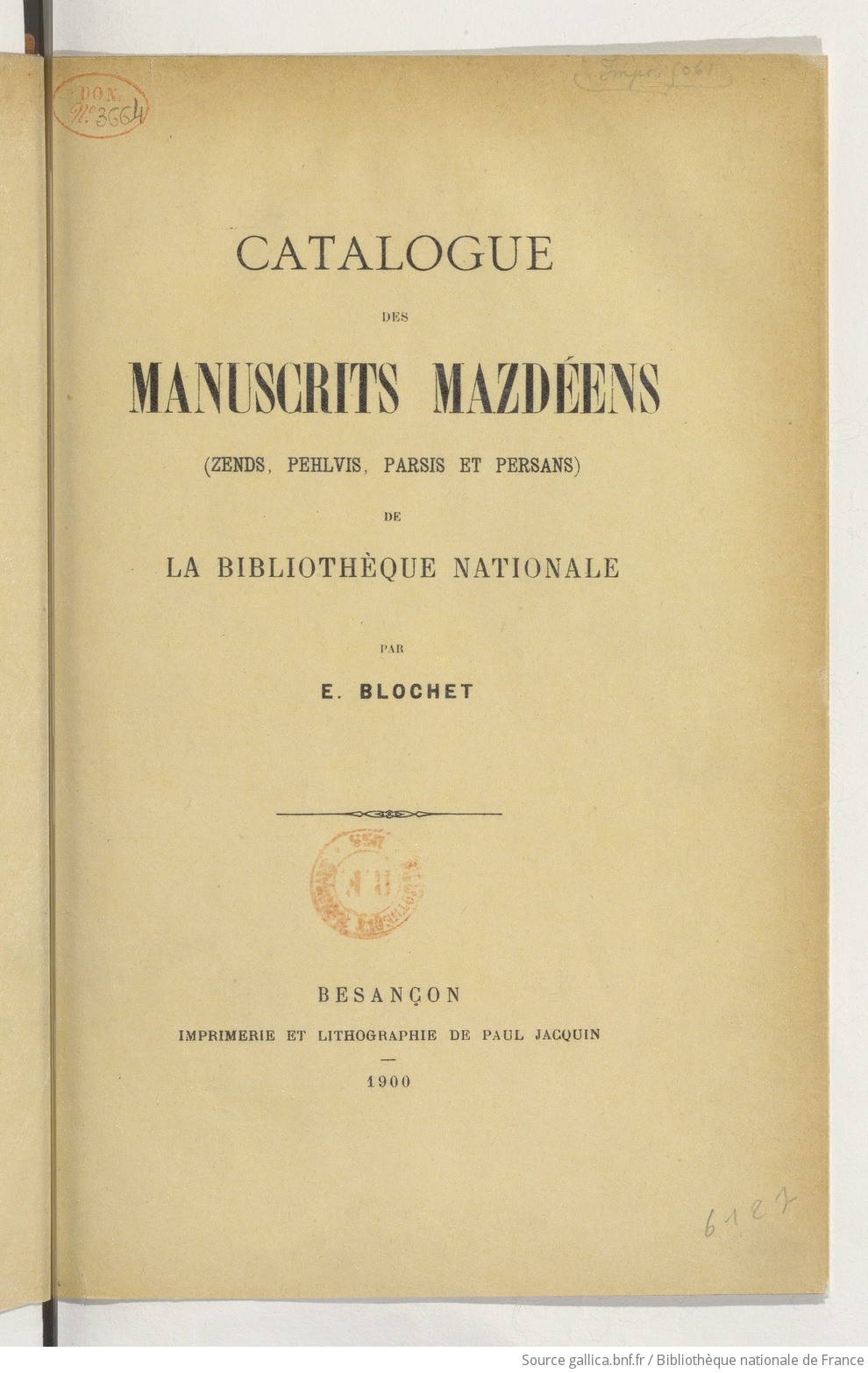Eugène Burnouf was working on the Zend-Avesta, in the wake of the work published by A. H. Anquetil-Duperron (1731-1805). However, he used a different methodological approach aimed at understanding the text by comparing it with Sanskrit, and Vedic in particular. He had to travel personally to London and Oxford in the spring of 1835, hoping to collect and copy Avestan and Vedic texts and thus continue his long philological work of reconstructing the history of the Sanskrit language. In 1826, as part of his research into the Buddhist language of Pāli, he had corresponded with Alexander Johnston (1775-1849), vice-president of the Royal Asiatic Society of London and a former magistrate of Ceylon, who had returned to Britain in 1819 and had sent him, in Paris, a Pāli grammar book and a manuscript of the Mahāvaṃsa. When Burnouf visited him in person at the end of April 1835, he had the opportunity not only to draw up the list of Avestan manuscripts he needed – this list was then sent directly by A. Johnston to Robert Grant (1779-1838), the Governor of Bombay – but also to see several Avestan texts, accompanied by their translations into Sanskrit, that the 'famous Parsi, Manack-dji Curset-dji' had sent him. E. Burnouf decided to immediately write to Manockjee Cursetjee (Manakji Kharshedji, Manekji Khurshedji or Manackjee Cursetjee) to also obtain Sanskrit translations of the different parts of the Avesta; for if the Vedic language allowed him to establish common Indo-Iranian verbal roots, the singular semantic field of certain Avestan terms still eluded him. By relying on the equivalences produced by Indian translators, he could then hope to recover the specific terminology of Zoroastrian liturgical texts. This hope was also partly based on a rumour that had been circulating since Anquetil-Duperron about the probable existence of a Sanskrit translation of the first seven chapters (fragards) of the Vidēvdād.
Thus Burnouf sent his Commentaire sur le Yaçna (Commentary on Yaçna) (1833) to the British-trained Parsi legal expert, Mr Cursetjee, who was a member of the Bombay Branch of the Royal Asiatic Society then chaired by the Scottish pastor John Wilson (1804-1875). Cursetjee gave the Parisian scholar a zealous reply, sending him, in February 1836, his lithographed edition of Vendidad Sadé (BnF – sanscrit 1046), which he had created in Bombay in 1832, as well as translations into Indian languages of certain passages of the Avesta, either in Sanskrit or in Gujarātī, which he had procured or personally copied. Between 1838 and 1841, Burnouf received a number of "fragments" extracted from the Yašt and Khorda Avesta (Nīrang, Āfrīnagān and Niyāyišn) which he grouped into three volumes (BnF – Blochet 1900, ms Burnouf 2, p. 57; ms Burnouf 5, pp. 32-34; ms Burnouf 7, pp. 12-14). In 1841, Cursetjee also procured for him the Mīnōkhired (BnF – Blochet 1900, p. 73) in Pehlvi with its Sanskrit translation. Visiting Great Britain in 1842, Cursetjee took the opportunity to go to Paris and visit Eugène Burnouf, who welcomed him with enthusiasm and gratitude.
Published in juillet 2024
.png)

